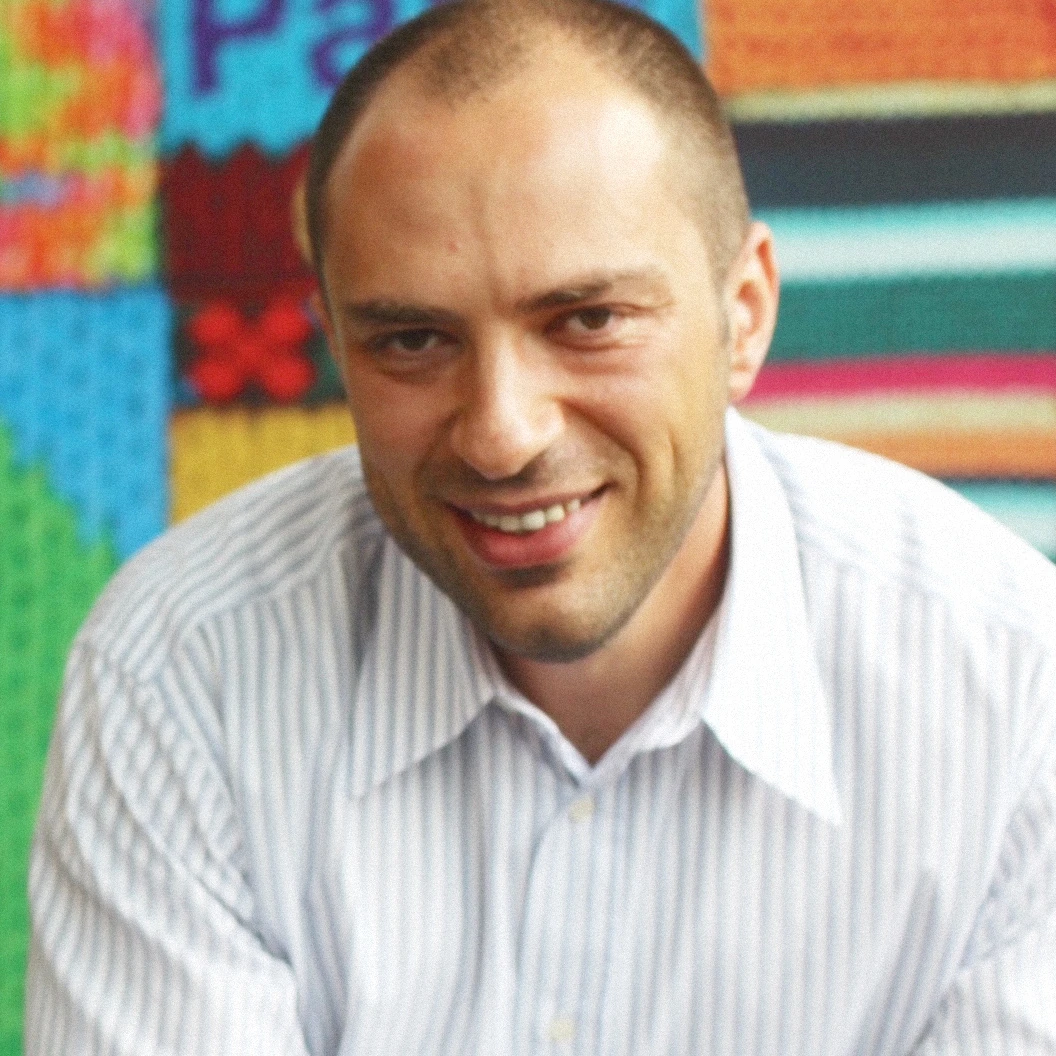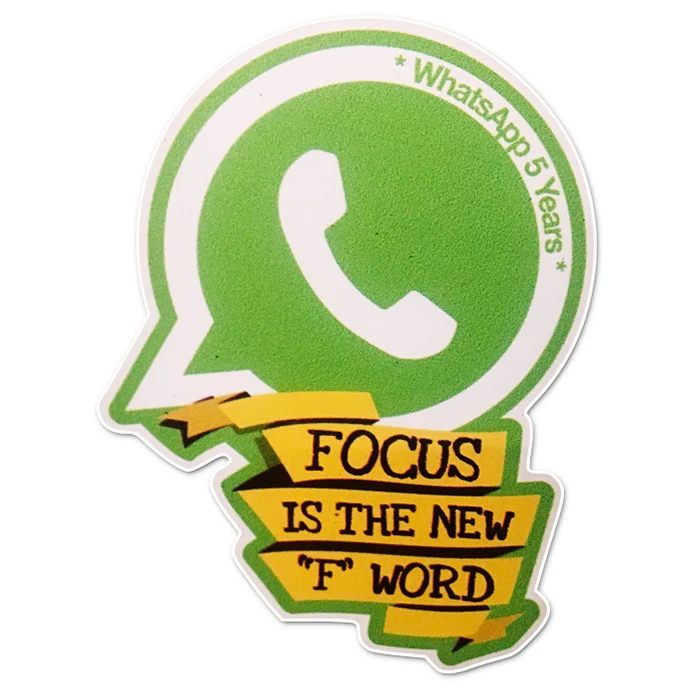Three and a half years ago, Facebook announced its plan to acquire messaging phenom WhatsApp for $19 billion—a price tag that was a head-snapper at the time, and remains one today. But it was only in January of this year that the WhatsApp team, which has worked out of a succession of Silicon Valley offices, moved onto the Facebook campus in Menlo Park. It occupies a wing of Building 10, where its new workspace sits behind doors with a sign making a request I can’t remember seeing at any other tech company: “Please keep noise to a minimum.” Once you get inside, the message is reinforced with additional library-esque signage such as “Quiet Zone.”
When I ask WhatsApp CEO Jan Koum about the unexpected emphasis on quietude, he tells me that the company has found that its engineers get their best work done in a distraction-free environment. “We’re not a typical bunch,” explains Koum, who cofounded the company with his friend and fellow Yahoo alum Brian Acton in 2009. “We’re a little bit older and a little bit crankier than probably a typical college graduate. So we’ve always preferred to have a very quiet office environment.”

WhatsApp’s space was indeed strikingly tranquil on the day I visited. But the company’s belief in the value of concentrated effort runs far deeper than a mere desire to discourage unnecessary chatter. It’s embraced the mantra “Focus is the new ‘F’ word” and emblazoned it on refrigerator-style magnets that employees have stuck on surfaces throughout the office. And a WhatsApp staffer informs me that a colorful mural by Bay Area artist Ian Ross, which looks pleasantly abstract to me, actually has focus as its theme.
Most important, it’s easy to see how WhatsApp’s dedication to focus is expressed in the app itself, which made its name as a free, approachable alternative to paying a wireless carrier for text messages and has added only a handful of new features—such as voice and video calling—since. “The culture of the company comes from the product we’re building,” says Koum, a focused guy himself who only occasionally takes time out of his schedule to talk to members of the media. “We’ve always wanted to build a product that is simple, utilitarian, really efficient, doesn’t use a lot of bandwidth, doesn’t use a lot of battery on your phone.”
By the time Facebook bought WhatsApp, that straightfoward proposition had already allowed the service to rack up more than 450 million monthly active users. Two years later, that figure hit one billion. Today, it’s reached 1.3 billion monthly users, one billion of whom use it every day. They send 55 billion messages, 4.5 billion photos, and one billion videos daily. (Unusually global in its appeal, the app is available in 60 languages and counts India, Brazil, Indonesia, and Mexico among its biggest countries in terms of users; the U.S. is also in the top 10.)

WhatsApp’s sustained growth is reminiscent of Facebook’s own impressive ability to keep its user base ticking ever upward. But while Facebook has long prided itself on the way its growth team has turned attracting new members into a science, Koum is equally proud of the fact that WhatsApp has not done so. Instead, all of its attention has gone into making the app as simple as possible to get started with—it doesn’t even require you to create a user name or password—and so useful that you’ll tell friends and family about it.
“The important thing for us is that all the growth has been organic,” says Koum. “We’ve never done any kind of growth hacking or anything like that. And we’ve always thought that that’s what makes our network stronger.” All along, he adds, the company’s goal has been “getting every single smartphone user on our network and getting them to use WhatsApp.”
Keeping It Simple
As much as WhatsApp has resonated around the world, it wasn’t a given that it would remain so streamlined once it became part of Facebook. The Facebook service itself, after all, has always erred on the side of trying many things rather than mastering a few. It also spun its Messenger feature out into a standalone app that is itself dense with functionality. Even Instagram, which originally zeroed in on one job—making it easy to beautify and share square photos—is now adding new capabilities as fast as it can build them.
In February of this year, WhatsApp got its only new feature that feels at all like a departure from its core mission: a “Status” tool which, like the “Stories” in Facebook and Instagram and Messenger’s “Day,” allows users to weave images and video clips into shareable multimedia mini-extravaganzas.
Like others at Facebook involved with its variations on the Stories theme, Koum gives Snapchat full credit for the original idea but says that his version isn’t just a bolted-on clone. In fact, he points out that WhatsApp originally centered around text-only status updates and only segued its way into messaging later. “Images tell a much better story than text,” he says. “And videos tell a much better story than images. So we wanted to introduce a richer status into our application, and basically bring our 2009 status into the 2017 world. And that’s what we did.”
The initial rollout of the new Status feature provoked somegrumblingamong users who missed the old-school text statuses, which WhatsApp swiftly brought back. Still, a critical mass apparently welcomes the new version. In July, the company announced that 250 million people—a quarter of all members—were using it daily, giving it a bigger audience than Snapchat in its entirety.
By introducing the Status feature, WhatsApp has contributed to pan-Facebook efforts to tamp down competition from Snap. But like its fellow acquiree Instagram, the company has retained a generous degree of autonomy when it comes to determining its own future. At the same time that Messenger is ramping up its support for games, for instance, Koum calls out gaming as being insufficently utilitarian to make the cut on his service: “People don’t want to go and play games on WhatsApp—they want to communicate on WhatsApp.”
Instagram CEO Kevin Systrom likes to compare working with Facebook CEO Mark Zuckerberg, COO Sheryl Sandberg, and CTO Mike Schroepfer to having a world-class board of directors. Koum says that WhatsApp has a “fairly similar” relationship with its parent entity, though he adds that he also contributes to Facebook’s overall strategy as a member of its own board: “It gets a little bit recursive if you start thinking about it.”

WhatsApp is, however, deeply integrated into Facebook when it comes to utilizing its resources and avoiding duplicative effort. For instance, it can use its parent company’s powerful recruiting machine to hire new talent. And rather than having to build its own plumbing to support voice and video calls, it’s been able to construct those features atop infrastructure that Facebook has already created for the purpose.
This sort of piggybacking has helped WhatsApp remain a tiny operation given its vast user base, with fewer than 250 employees, up from 55 at the time of acquisition. (Instagram has gone from 13 people to 500-plus since joining Facebook in 2012; overall, Facebook, Inc. has more than 20,000 staffers.) WhatsApp is still growing, with more than 50 open positions posted at Facebook’s careers site when I checked. But “engineers prefer to work in nimble teams that don’t necessarily have a lot of meetings or a lot of overhead that is not writing code and building product,” believes Koum. “And so our desire has always been to have really small engineering teams.”
Privacy For The Masses
One thing that WhatsApp had long wanted to offer but needed time to implement was seamless end-to-end encryption, so every messaging conversation, voice call, and video session was sealed off from prying eyes, in a way that protected users without requiring them to change their habits. The company began working on the effort in 2013 and completed it in early 2016. “There are a lot of regimes out there that spy on their citizens or want to spy on their citizens,” says Koum, who was born in Ukraine when it was part of the Soviet Union and arrived in the U.S. as a teenager. “That are not very democratic, that try to have really strong censorship, and we’ve always been against that.”
WhatsApp’s implementation of encryption has not been without controversy; it’s led to the app being periodically blocked in Brazil and, more recently, hobbled by China’s Great Firewall. However, Koum—who is careful to share credit with Apple, which has built encryption into its iMessage protocol—says that the fact WhatsApp is securing billions of communications a day in a way that it can’t bypass with a backdoor has helped governments get their heads around the new reality.
“We’ve learned that governments and law enforcement agencies have understood and accepted the fact that end-to-end encryption is here to stay,” he says. “Nobody has come and asked us to turn off end-to-end encryption or disable it, which you actually cannot do mathematically. The moment you provide a backdoor to an end-to-end encrypted product, it’s no longer an end-to-end encrypted product.”

Getting Down To Business
Facebook has granted WhatsApp the freedom to maintain its focus on building a simple, utilitarian, user-pleasing app without rushing any effort to monetize those 1.3 billion members. Prior to being acquired, the company had a hardline attitude against ads. It still doesn’t show them, making for a sharp contrast with Instagram, which now touts the fact it has more than a million advertisers, making it a significant contributor to Facebook’s overall revenue.
For a while now, WhatsApp has been talking about an alternative business model that Messenger is also developing: serving as an intermediary between consumers and businesses for purposes such as customer service. Koum still isn’t ready to spill the details on anything specific that the company might be building in that area. But he does tell me about instances where it could make sense. If your Lufthansa flight is delayed, he explains, you might appreciate hearing that news via WhatsApp—and then having the chance to rebook it within the app.
It’s possible that Lufthansa might pay for that opportunity, but Koum stresses that WhatsApp isn’t yet concentrating on the financial side of such scenarios. Instead, it’s still working out what the user experience would be like.
“Already, we have businesses who use WhatsApp for their communication with their customers,” he says. “And in a way, it’s kind of like trying to put a round peg in a square hole because the tool is not the right tool for them to use. What we’ve talked about is that our network would be more valuable if we could get businesses to use it appropriately.”
Though designing functionality to let businesses communicate with their customers would be a new frontier for WhatsApp, it would also be very much in the spirit of the success the company has found by offering the world a better alternative to wireless carriers’ text messaging services. “I get alerts from my dentist reminding me for an appointment via SMS, and I have to reply ‘yes’ or ‘no,'” Koum notes. “It’s not a very good user experience.”
After discussing WhatsApp’s present and future with Koum, I wrap up by asking him about its early days. Was there a moment when he knew that he and Acton had created something with the potential to appeal to a meaningful percentage of humanity?
“In Hollywood films, they always make it look like there’s that epiphany you have, that you come up with an idea and you run to the patent office with music playing in the background,” he laughs. But he believes that he and Acton found a winning formula over time because they experimented, leveraged the technologies available to them (such as iOS notifications, which Apple introduced in 2009), and watched how people used their app. Not only is this approach repeatable, he adds, it’s become even more doable as smartphones have reached even more people and matured as a platform.
“Getting to a billion users these days,” he confidently asserts, “is much easier than it was when we started out.”
Recognize your brand’s excellence by applying to this year’s Brands That Matter Awards before the early-rate deadline, May 3.
